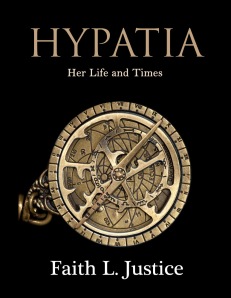Historian’s Notebook has moved. Details here.
 It’s a sunny day in Pompeii on April 8th in this first year of the reign of Imperator Titus Caesar Vespasianus Augustus (AD 79). The crowds surge toward the amphitheater for the games given by D. Lucretius Stater Valens, a lifelong priest to the cult of the deified Nero Caesar Augustus. The placards pasted on the walls in the forum promise, “ten pairs of gladiators owned by his son D. Lucretius Valens and wild animal hunts, as permitted by law. The seats will be shaded with awnings.” Pompeii’s is the oldest stone amphitheater in the empire. For one hundred-fifty years it has proudly hosted games and religious festivals, but it’s looking dated next to the modern Flavian Amphitheater which will open next year in Rome. The frescoes of gladiatorial combat and beast hunts decorating the walls surrounding the sand are fading, but the patrons come for the blood sports, not the art.
It’s a sunny day in Pompeii on April 8th in this first year of the reign of Imperator Titus Caesar Vespasianus Augustus (AD 79). The crowds surge toward the amphitheater for the games given by D. Lucretius Stater Valens, a lifelong priest to the cult of the deified Nero Caesar Augustus. The placards pasted on the walls in the forum promise, “ten pairs of gladiators owned by his son D. Lucretius Valens and wild animal hunts, as permitted by law. The seats will be shaded with awnings.” Pompeii’s is the oldest stone amphitheater in the empire. For one hundred-fifty years it has proudly hosted games and religious festivals, but it’s looking dated next to the modern Flavian Amphitheater which will open next year in Rome. The frescoes of gladiatorial combat and beast hunts decorating the walls surrounding the sand are fading, but the patrons come for the blood sports, not the art.
The spectators pass into the open spaces surrounding the arena where merchants and food vendors hawk their wares. The scent of fresh bread, roasted meats, and sour wine waft through the crowd to mingle with the odor of sweat and hair pomade. People look at their wooden tickets and enter the appropriate gate to spread throughout the amphitheater: the front rows reserved for the leading citizens; the middle for the lesser knights and merchants; and the top for the poor, slaves, and women. Some resent the class divisions at the arena. At the chariot races in the hippodrome, it’s open seating (except for the emperor, of course!) and women mix with the men. (more…)








